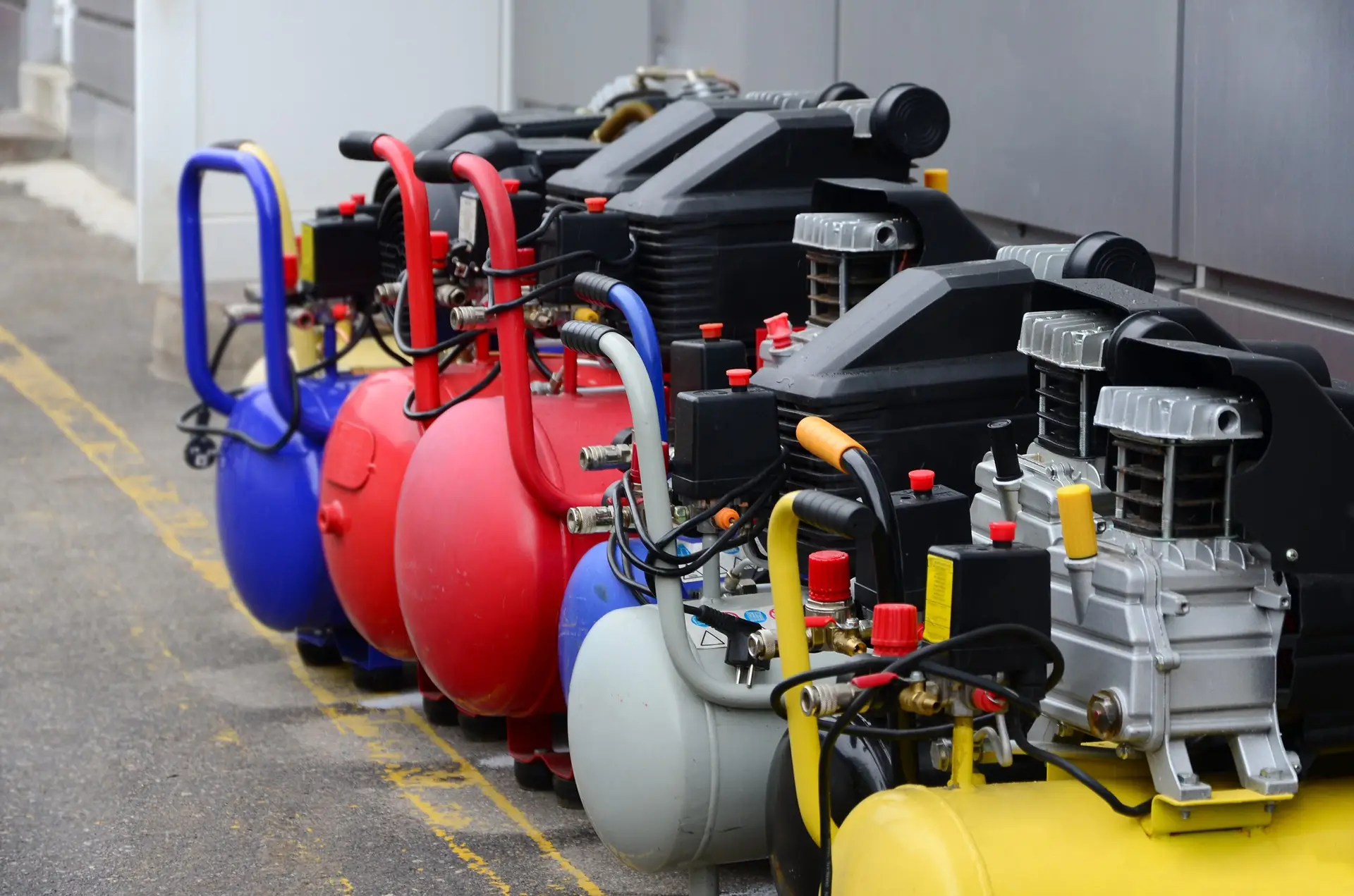Compressed air might not be the first thing that comes to mind when thinking about food and drinks, but it plays a central role behind the scenes. From processing and packaging to cleaning and quality control, compressed air is essential in nearly every step. In this post, we’ll break down where and how compressed air is used in the food and beverage industry, why cleanliness and reliability matter so much, and what operations should watch for to maintain safety and efficiency.
Understanding the Importance of Clean Compressed Air
Compressed air is often considered the fourth utility in food production, after electricity, gas, and water. That is to say, many machines simply cannot run without it. However, not all compressed air is created equal. In food and beverage settings, the air must be clean, dry, and free of oil or other contaminants.
Most importantly, this air often comes into direct or indirect contact with the food. For instance, air might be used to clean bottles before filling or to move powdered ingredients through tubes. If that air contains oil, moisture, or particulates, it can spoil the food or create safety issues. Therefore, proper filtration and regular maintenance are essential.
Direct vs. Indirect Contact: Why It Matters
The way compressed air interacts with the product matters a lot. When air touches food directly, such as when it’s used to mix or dry ingredients, the cleanliness level must meet the strictest hygiene standards. Meanwhile, when air is used indirectly, like in powering machines or moving packaging materials, the risk is lower but still present.
To clarify, even indirect systems can leak or release contaminated air into clean zones. That is why many facilities treat all air to a high standard, regardless of the intended use. This precaution simplifies system design and reduces the chance of errors.
Key Applications of Compressed Air in Food and Beverage
Compressed air has dozens of uses in a modern production line. Below are some of the most common examples.
Packaging and Bottling
Air is used to blow dust or particles out of containers before filling. It also powers the actuators that control movement on conveyor belts, capping machines, and labeling systems. In other words, packaging lines often depend heavily on air systems.
A common example would be the use of air knives to dry bottles after they are washed. These tools create a high-speed curtain of air that removes water quickly and efficiently. Similarly, air can be used to seal packages or control vacuum-packing systems.
Product Handling and Movement
For instance, many products like flour, sugar, or grains are transported through tubes using compressed air. These pneumatic conveying systems reduce spillage and keep materials in a controlled environment. As a result, they improve cleanliness and reduce waste.
However, these systems require carefully regulated pressure and air quality. If the air carries moisture or oil, it can clog pipes or affect the material being moved. That is why dryers and filters are installed at several points throughout the system.
Cleaning and Sanitization
Air is often used for cleaning surfaces, equipment, and even the final product. For example, a burst of compressed air might remove crumbs or powder from a conveyor belt. In some facilities, air is also used to blow off loose particles from vegetables or other items before washing.
It’s worth noting that the cleaning process is only effective if the air itself is clean. Any contamination can undo the benefits. Therefore, food manufacturers often install dedicated air systems with higher levels of filtration for these tasks.
The Role of Regulations and Standards
Food and beverage producers are held to strict regulatory standards. In North America, guidelines from organizations such as the Canadian Food Inspection Agency and the FDA set clear expectations for cleanliness and safety. These standards often recommend or require the use of food-grade compressed air.
Food-grade compressed air must meet Class 0 or ISO 8573-1 air purity standards. This classification limits the presence of oil, particles, and moisture in the air. Meeting these levels requires well-designed systems that include dryers, coalescing filters, and sometimes even oil-free compressors.
Moreover, regular testing is essential. To maintain compliance, operators must routinely check the air quality using particle counters or sampling tools. These tests help identify leaks, filter failures, or compressor issues before they lead to contamination.
Designing Systems for Reliability
Air systems in food and beverage facilities need to be both clean and reliable. Downtime can stop production, cause delays, or spoil materials. For this reason, many companies invest in redundant systems or monitoring tools.
For example, some facilities use pressure sensors and flow meters to watch for drops in performance. If pressure falls below a certain threshold, alerts are triggered. Likewise, filters often have differential pressure indicators that show when they need to be replaced.
To extend system life and prevent downtime, smart planning is essential. This includes selecting the right compressor size, planning for proper airflow, and installing high-quality dryers and filters. If your facility needs help with this step, you can reach out to a professional to assess your system and recommend improvements.
Energy Efficiency Considerations
Compressed air systems use a lot of energy, often more than expected. In fact, air systems can account for 10 percent or more of a facility’s total energy bill. Therefore, efficiency should be a high priority.
One of the best ways to improve efficiency is by eliminating leaks. A small leak may not seem like much, but over time it adds up. Leaks often occur at couplings, hoses, and valves. Using ultrasonic leak detectors can help you identify and fix them quickly.
Another tip is to match system output to actual demand. Many systems run at full pressure all day, even during low-demand periods. This wastes energy and wears out equipment faster. Installing a variable speed drive compressor can help regulate output and reduce waste.
Maintenance and Monitoring
A well-maintained system lasts longer and performs better. Maintenance tasks for food and beverage air systems include checking filters, draining moisture traps, and inspecting for leaks or oil buildup. Importantly, these tasks must be done regularly, not just when something breaks.
In addition, modern systems can include remote monitoring. These tools collect real-time data on pressure, flow, temperature, and air quality. With this data, operators can respond quickly to changes and make informed decisions.
If your current system lacks these features, it may be worth reviewing the available options for Air Compressors in Canada. Investing in the right tools can reduce long-term costs and improve food safety outcomes.
Best Practices for Compressed Air Use in Food Settings
To make the most of compressed air in a food or beverage environment, a few best practices should always be followed.
Firstly, identify all points of contact where air could reach food or clean surfaces. Once these areas are known, apply the highest level of filtration to these zones. In addition, always select components rated for food safety.
Secondly, document your maintenance schedules and testing protocols. Clear records help demonstrate compliance and also serve as a guide for training new staff. Moreover, written logs help you spot patterns that may indicate larger system issues.
Lastly, consider a full system audit at least once a year. These audits examine energy use, system reliability, and air quality. Most importantly, they give you a roadmap for future improvements and help prevent problems before they occur.
FAQ: Compressed Air in the Food and Beverage Industry
What is food-grade compressed air?
Food-grade compressed air is air that meets strict purity standards, usually ISO 8573-1 Class 0. It is free of oil, moisture, and particles, making it safe for use in direct contact with food products.
Can compressed air contaminate food?
Yes, if not properly filtered and dried, compressed air can carry oil, water, or particles that may contaminate food. That’s why filtration and maintenance are essential in any facility using compressed air.
How often should compressed air be tested in a food plant?
Regular testing is recommended, with some plants doing it monthly or quarterly. Testing should measure particle levels, oil content, and moisture to ensure compliance with safety standards.
Are oil-free compressors required in food production?
Not always, but they are commonly used for added protection. Oil-free compressors reduce the risk of contamination, especially in systems where air has direct contact with food or packaging.
What should I include in a maintenance plan for my air system?
A solid maintenance plan should cover filter changes, leak detection, air quality testing, dryer inspections, and documentation of all service activities. Consistency is key to preventing contamination and downtime.











